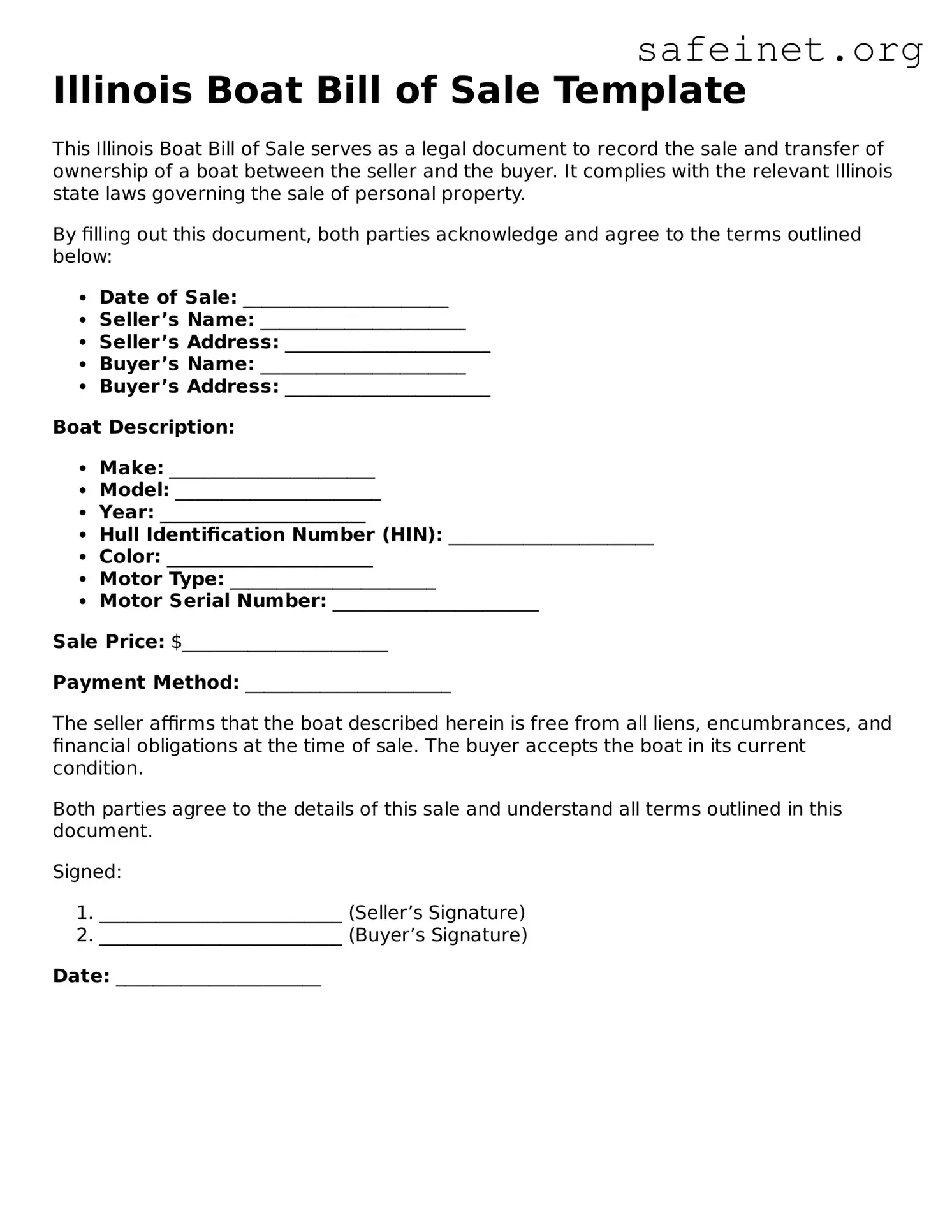What is the purpose of the Illinois Boat Bill of Sale form?
The Illinois Boat Bill of Sale form serves as a legal document that records the transfer of ownership of a boat from one party to another. It provides proof of purchase and helps both the buyer and seller keep accurate records of the transaction. Having this form can simplify future registrations and ownership claims.
Is a Boat Bill of Sale required in Illinois?
While a Boat Bill of Sale is not legally required in Illinois, it is highly recommended. Without it, you may face challenges when registering the boat, or in cases of disputes about ownership. The form acts as a safeguard for both parties, providing a clear record of the agreement.
What information is needed to complete the form?
To complete the Illinois Boat Bill of Sale form, you will need the names and addresses of both the buyer and seller, the boat’s description, including its make, model, and hull identification number (HIN), the sale price, and the date of sale. This information helps ensure that the transfer of ownership is accurately documented.
Can the Boat Bill of Sale be used for all types of boats?
Yes, the Illinois Boat Bill of Sale can be used for various types of boats, including motorboats, sailboats, and personal watercraft. Regardless of the boat's size or function, the form is designed to work for any vessel being sold or transferred.
Do I need to get the Bill of Sale notarized?
No, notarization is not required for the Illinois Boat Bill of Sale. However, having the document notarized can provide an additional layer of authenticity, especially if the transaction is significant or if there may be questions about the sale in the future.
What should I do with the Bill of Sale after completing it?
Once the Bill of Sale has been completed, both parties should keep a copy for their records. The seller should provide the original document to the buyer. This document will be necessary when the buyer applies for registration or title transfer for the boat.
How does the Bill of Sale impact registration?
The Bill of Sale is crucial for boat registration in Illinois. It serves as proof of ownership, allowing the buyer to register the boat with the Illinois Department of Natural Resources. Without it, the registration process could be delayed or denied.
Are there any fees associated with the Bill of Sale?
There are no specific fees for creating a Bill of Sale in Illinois, as the form itself is typically free. However, buyers should be aware of potential registration fees associated with transferring ownership and registering the boat after the sale.
Where can I get the Illinois Boat Bill of Sale form?
The Illinois Boat Bill of Sale form can be obtained online from the Illinois Department of Natural Resources website or through various boating facilities. Many local marinas and boating associations may also provide copies of the form.
